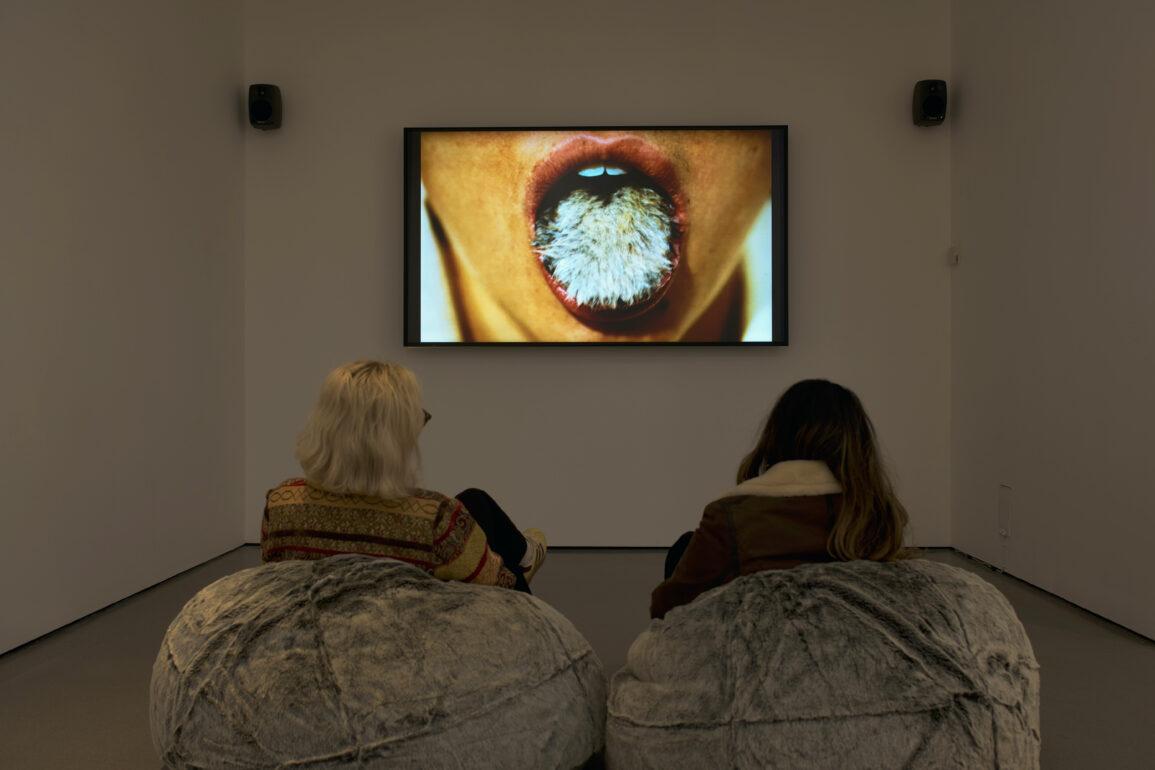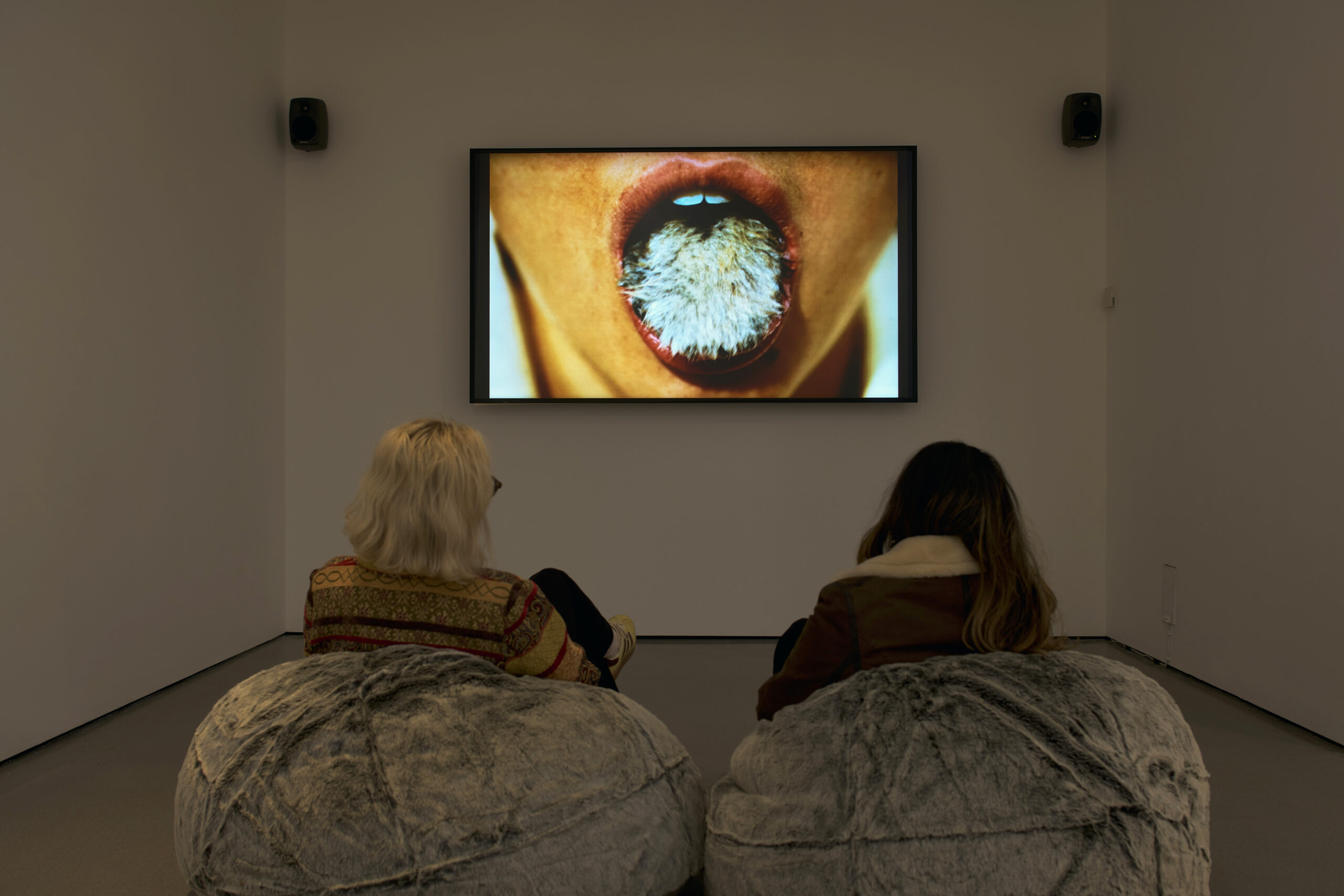
Bady Minck’s “La Belle est la Bête / Beauty is the Beast”, 2005.
© Bady Minck, Photo: John McKenzie
The Traumatic Surreal, an exhibition in the United Kingdom, is bringing a fresh look at Surrealism as the art movement celebrates its centenary. Focussing exclusively on the post-war works of women artists from Switzerland, Germany and Austria, the show sheds light on a feminist – and overlooked – thread in the evolution of the movement.
To mark the centenary of the publication of The Surrealist Manifesto (1924) by André Breton, the world’s top art institutions have thrown a spotlight on the movement. They include the Tate Modern in London, the New York Metropolitan Museum’s Surrealism Beyond BordersExternal link in 2022 and the imposing 100 Years of SurrealismExternal link survey at the Pompidou Centre in Paris (on show until January 13). Now a bold curatorial choice at the more humble Henry Moore InstituteExternal link in Leeds, UK, is repositioning the movement in a genuinely new, refreshing light.
Eschewing the predominantly male artists of the genre such as Max Ernst, Salvador Dali and René Magritte, curators Clare O’Dowd and Patricia Allmer chose only female artists working with sculpture in a specifically Germanophone context, and at a later period – from the 1960s to the present day.
These choices aim to explore how female artists turned to Surrealism to examine the legacies of fascism and the Holocaust, thereby expanding and extending the legacies of Surrealism itself.
As Breton defined it, Surrealism is “based on the belief in the superior reality” of associations, dreams, and plays of thought. The movement breaks down set binaries to free the mind from rationalism, logic, and Cartesian philosophy – the pinnacles of Western bourgeois ideology.
Surrealism’s rejection of traditional structures and hierarchies including marriage, children, and family, combined with its pursuit of reimagining society, appealed particularly to female artists.
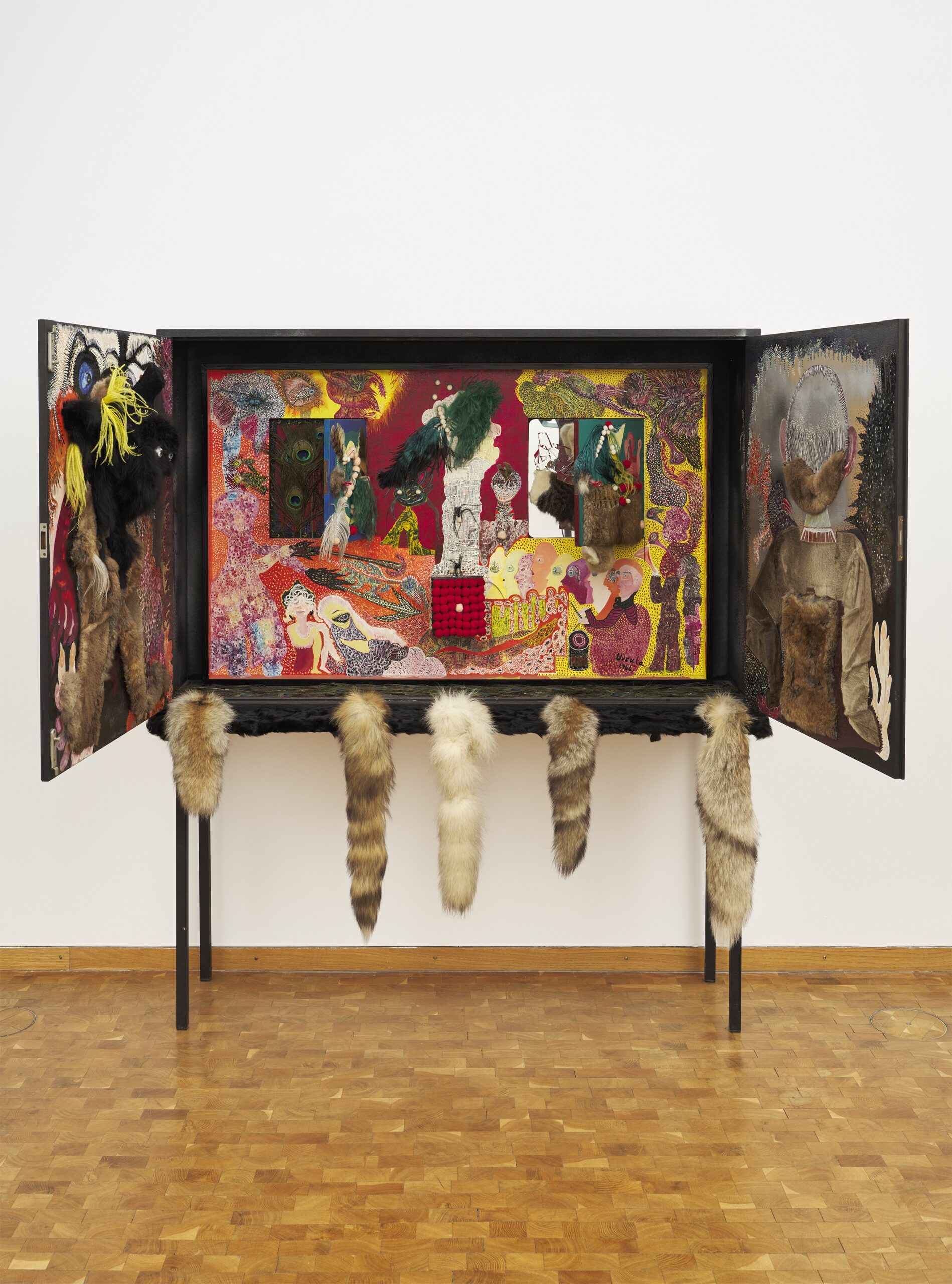



Ursula (Schultze-Blum), “The Big Pandora Box”, 1966.
© Rheinisches Bildarchiv Cologne
Overcoming trauma
In the wake of such “rediscovery”, The Traumatic Surreal offers one of the most compelling and focused examinations of the late period of Surrealism, inspired by Allmer’s book of the same name.
The exhibition is centred on the Freudian concept of trauma. It seeks to highlight the ways in which female artists navigated the intergenerational aftermath of Nazism and its impact on young women coming of age under the strictures of Kinder, Küche, Kirche (children, kitchen, church). For Allmer, these artists work against enforced forms of womanhood and can be read as an “early feminist protest against fascism”.
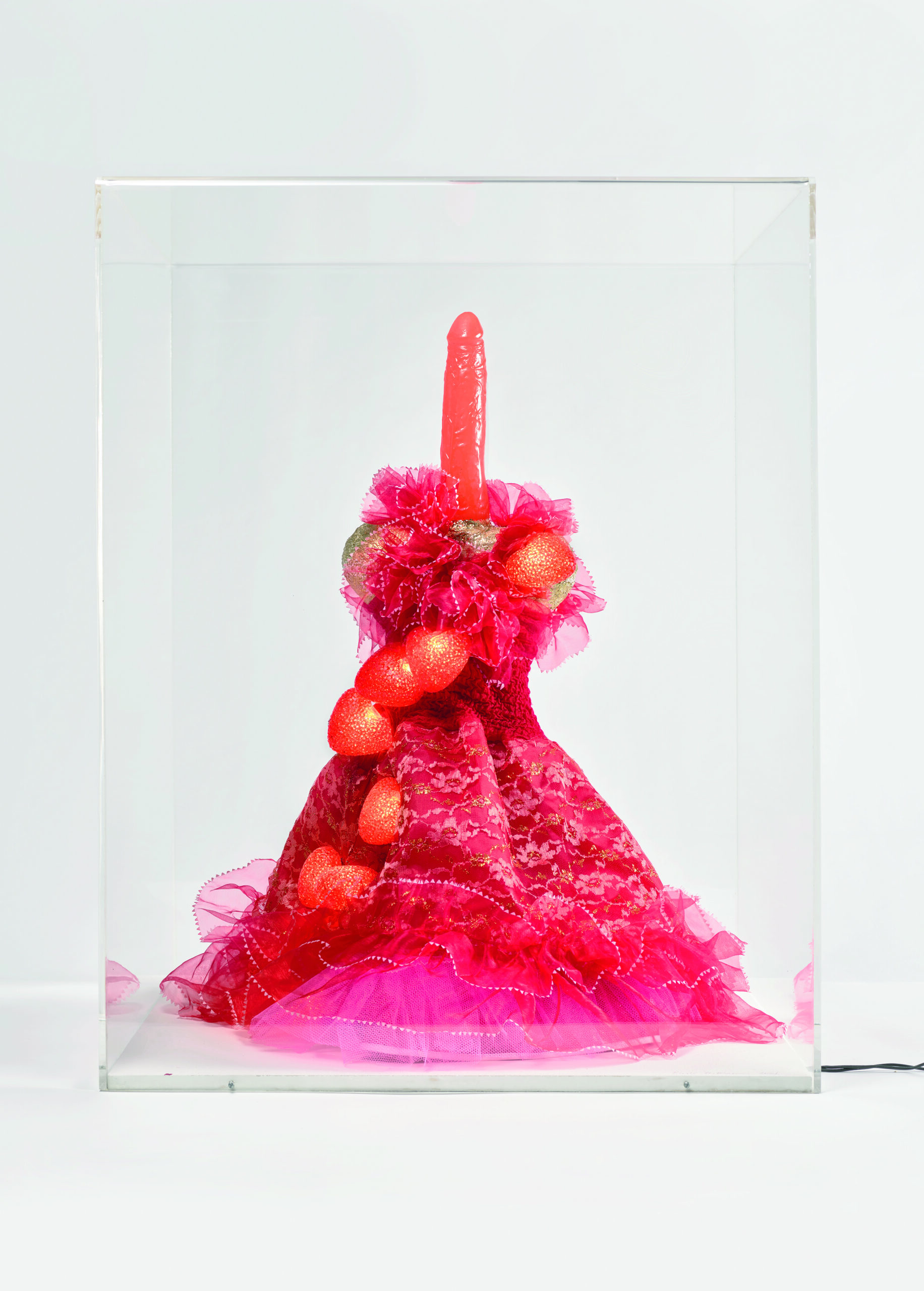



Renate Bertlmann’s “Carmen – enfant terrible” (2001): the lace edges of a chiffon ballgown are lined with delicate rows of sharp, triangular teeth, ceremoniously unfolding underneath a red dildo.
Belvedere Wien/Johannes Stoll
The Traumatic Surreal travels through three generations of women, starting with the Swiss artist Meret Oppenheim (born in 1913), the only one featured in the exhibition to have worked closely with the original Surrealist group of Ernst and Breton.
The German Ursula Schultze-Bluhm (also known simply as Ursula), born in 1921, had a career that bloomed after the Second World War. The same is true of the Swiss artist Eva Wipf, who was born in Brazil in 1929. The mid-generation is represented by the Austrians Renate Bertlmann and Birgit Jürgenssen, both born in wartime Vienna (1942 and 1943, respectively).
The multimedia artists Bady Minck (Luxembourg) and the Swiss Pipilotti Rist, both born in 1962 and still active, represent the third generation.
The works speak to each other across two connected themes. One is the blurring between animals and humans through the extensive use of fur across various artworks. The other is the theme of entrapment, which can be seen across all of the artists’ aesthetic concerns – cages, wires, and sharp, jutting edges down to the very details.
The (re)discovery of Eva Wipf
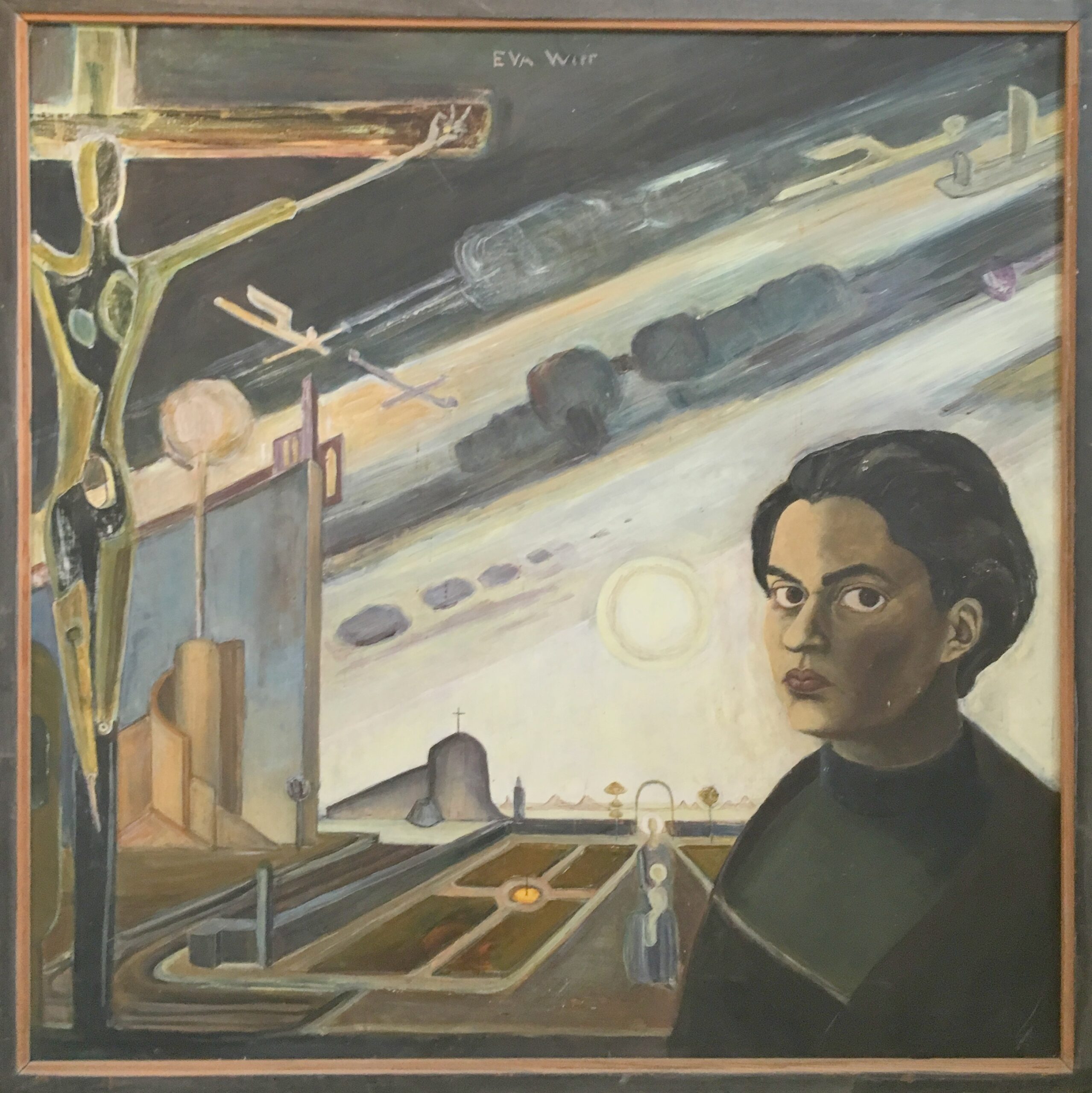



Self-portrait of Eva Wipf, 1954.
Courtesy of Museum & Forum Eva Wipf
Eva Wipf is particularly interesting: although prolific for much of her life, she is a relatively under-celebrated artist. Her creations range from panel paintings to avant-garde object assemblages and are a highlight of the exhibition.
“There are so many amazing women artists who have never had the opportunity to really make a name for themselves, and Wipf is definitely one of them”, says O’Dowd. Wipf has never been previously exhibited in the UK.
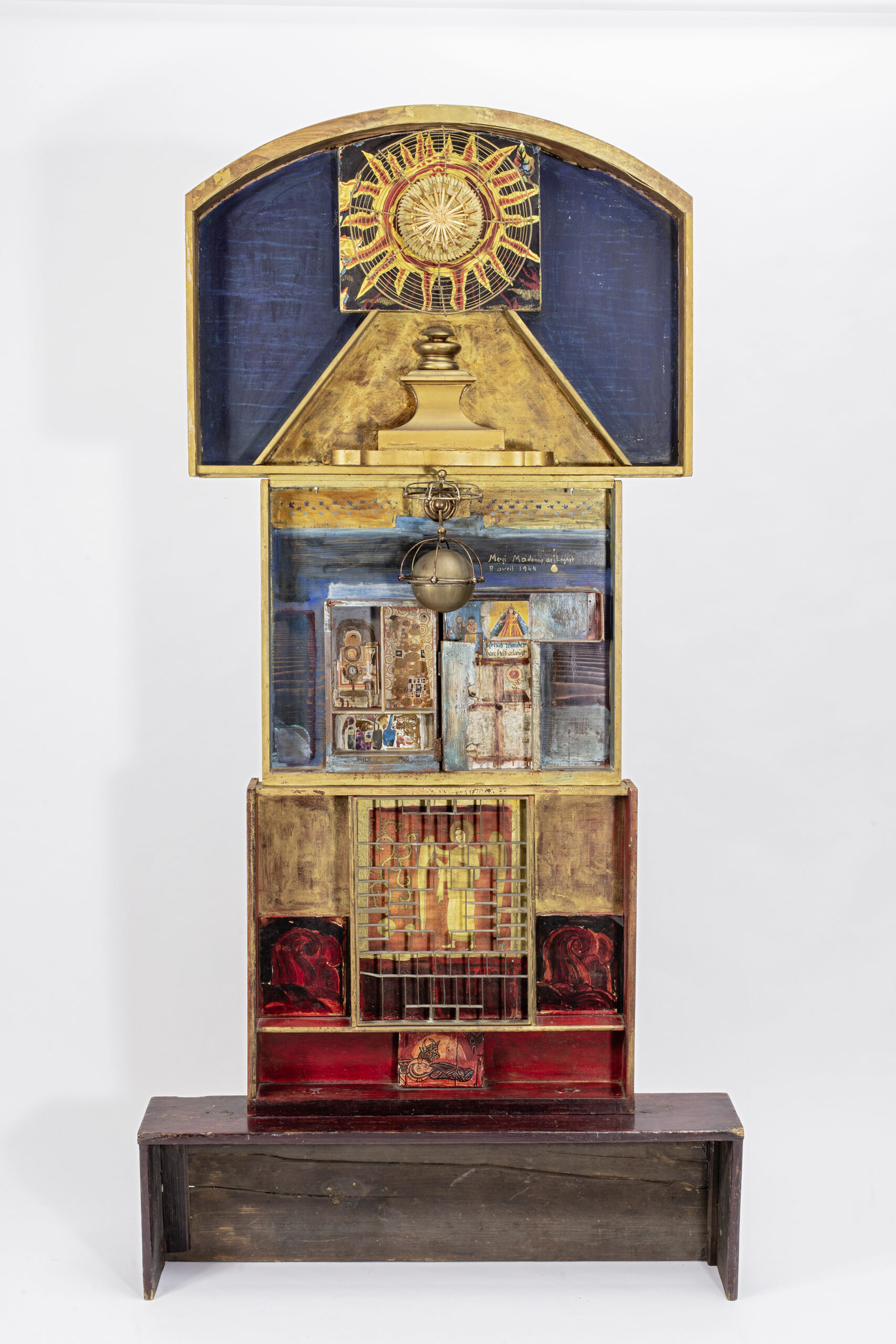



Wipf’s “Shrine III (Madonna de Laghet)”, 1964-68, is composed of multiple wooden cupboards, soap dishes, a disembodied clock base, and a kitchen grill repurposed as a caged, grated window to a medieval-like painted angel.
© Museum Eva Wipf
Her assemblages are composed of found objects from flea markets and discarded industrial scraps. The work of this daughter of missionaries often features religious iconography, which reflects on a crisis of knowledge and belief systems in a post-Holocaust world. The earliest work featured in the show sits right at the entrance of the exhibition: Wipf’s Shrine III.
Wipf makes literal the entrapment of domestic objects, while also imbuing them with a divine quality. She transforms everyday objects into iconoclastic shrines that offer a conflicting vision of both hope and ambivalence. The works on display balance an ethereal belief in the miraculous with dystopian scenes of protest.
From Meret to Eva
A celibate woman who lived alone for most of her adult life, Wipf kept a diary that details both an intense ambition as an artist and a raging insecurity. In July 1978, her last diary entry quoted the Chinese philosopher Lao Tzu: “He who knows others is wise; he who knows himself is enlightened.”
O’Dowd explains that “Wipf was directly influenced by Surrealism and especially by Meret Oppenheim – the two were occasional correspondents. We wanted to show the influence of different generations of women.”
The exhibition features two of Oppenheim’s works – Eichhörnchen (1969) and Word Wrapped in Poisonous Letters (Becomes Transparent) (1970), both produced while she was living in Switzerland after an 18-year hiatus or “crisis”. Allmer explains how Oppenheim’s late work covertly examines the Holocaust and Oppenheim’s own Jewish identity after she fled Germany for Switzerland with her family.
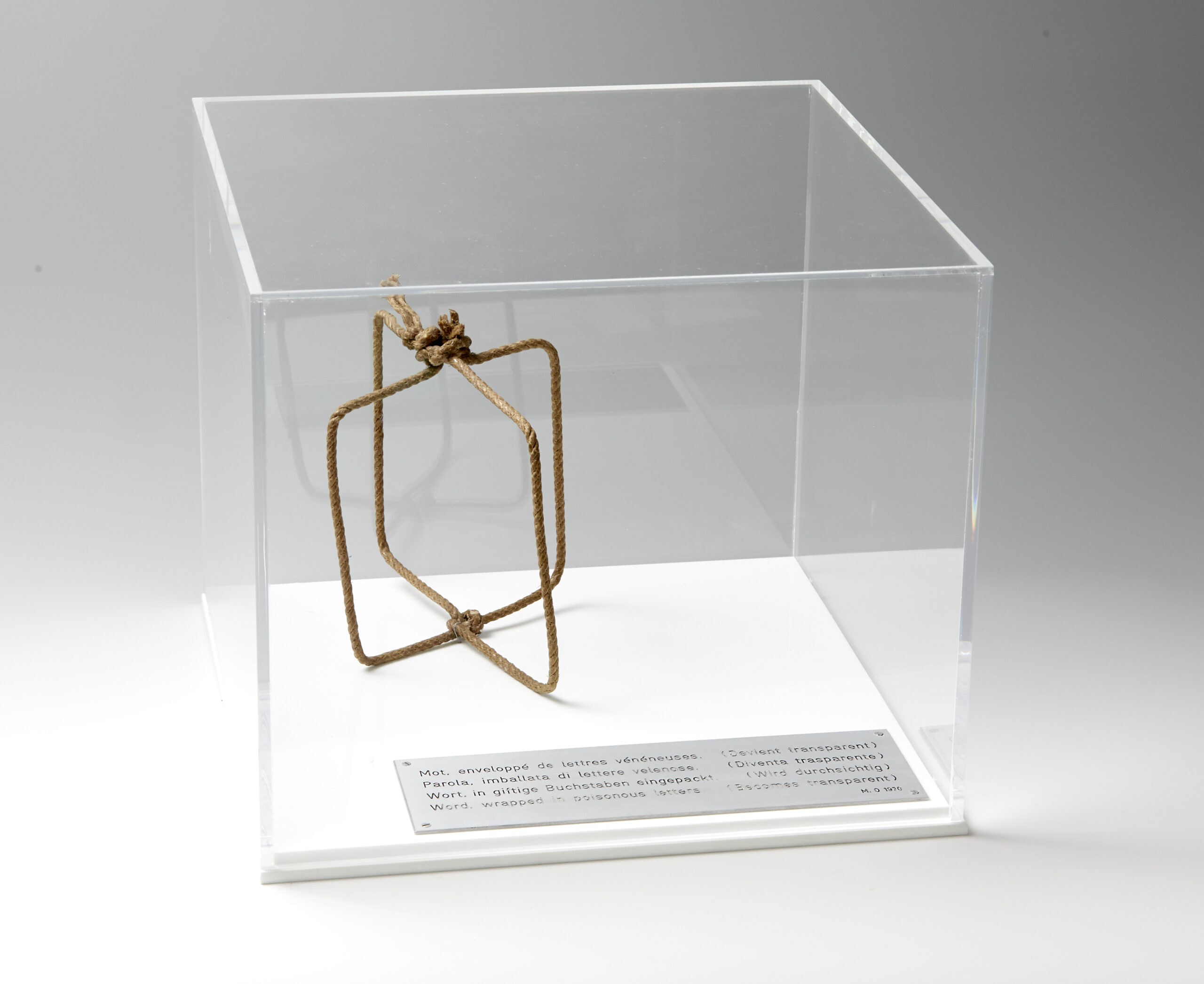



Meret Oppenheim:
“Word Wrapped in Poisonous Letters
(Becomes Transparent)”, 1970.
© DACS 2024 Courtesy LEVY Galerie, Berlin/Hamburg
Word Wrapped is a minimal wire construction. It features the tails of a swastika folded into a three-dimensional empty box, an outline of an aestheticised nothingness that nonetheless retains a formal stricture. The shadow of the wires falls warily on a white surface that bears this unstable, haunted imprint.
>> For more on Meret Oppenheim, read SWI swissinfo’s take on the latest restrospective of the artist – with archive footage from Swiss television of the 1950s and 1960s:
More
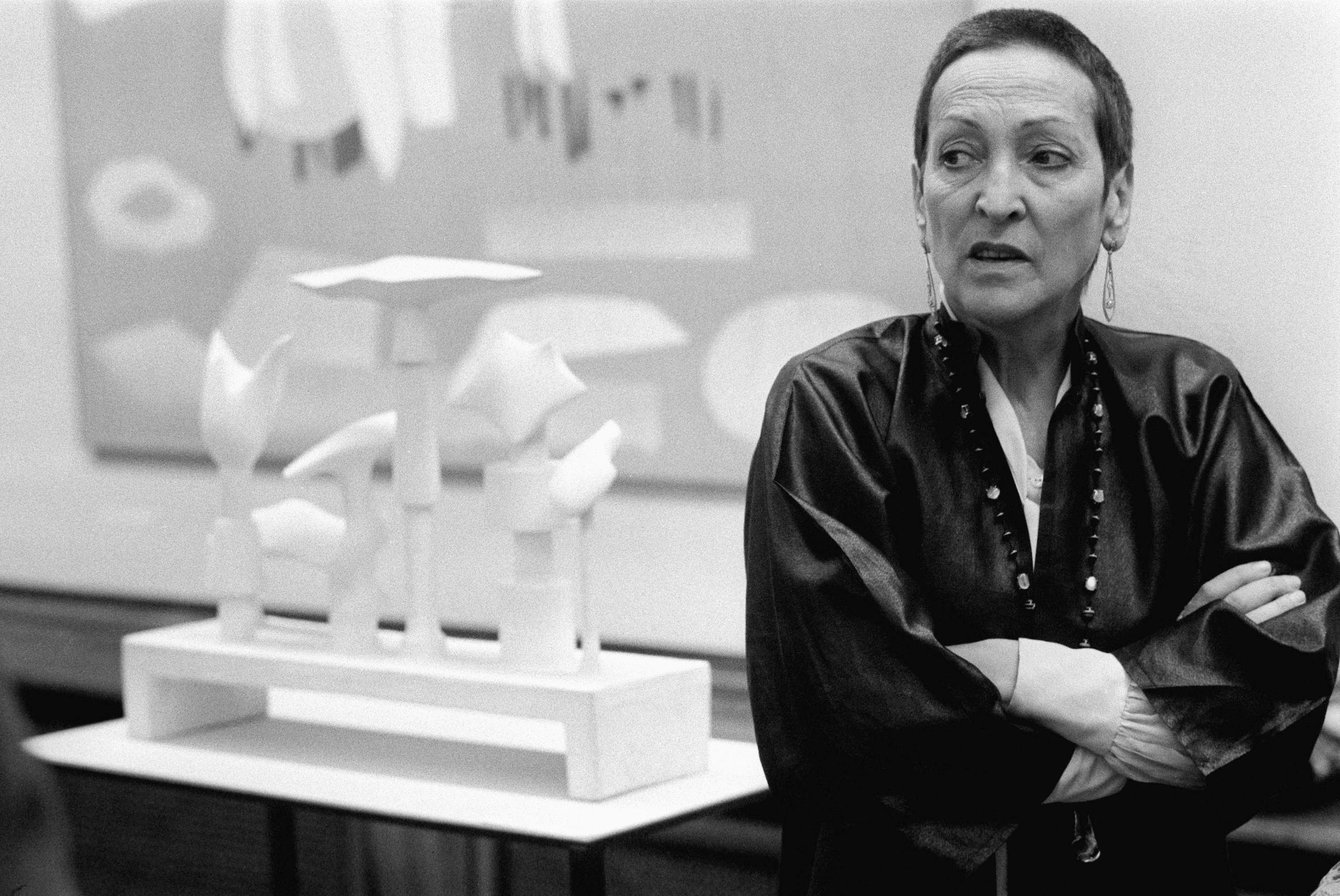



More
Who’s afraid of Meret Oppenheim?
Bearer of the torch
Jumping to 2017, Öffne meine Lichtung / Open My Glade (Flatten) (2000-2017) is composed of a series of nine one-minute films with a camera placed outside a high-rise apartment window. The camera captures Pipilotti Rist pressing her face against the surface of the glass.
The effect is grotesque, sensual, and surreal, of course – the pink of her lips turns into a squished amorphous splash, her hair gets trapped between her body and the window like a weed. Rist looks directly at the camera, aware of her own performance, critical of the way cinema has warped, trapped, fetichised, and distorted the mirage of femininity.




Video still from “Open My Glade (Flatten)”, 2000, video installation by Pipilotti Rist.
© Pipilotti Rist
Although surrealism itself has often framed women within an absolutist vision of the sensual and non-rational, the tradition has been re-appropriated here in playfully self-reflexive ways, gesturing towards the movement’s radical potential for dissent.
As women’s rights currently are threatened across the world in tandem with the rise of the far-right across Europe and beyond, The Traumatic Surreal is a timely and pertinent examination of the potential of everyday scraps as a bricolage for resistance.
Edited by Reto Gysi von Wartburg and Eduardo Simantob/gw
This post was originally published on this site be sure to check out more of their content




